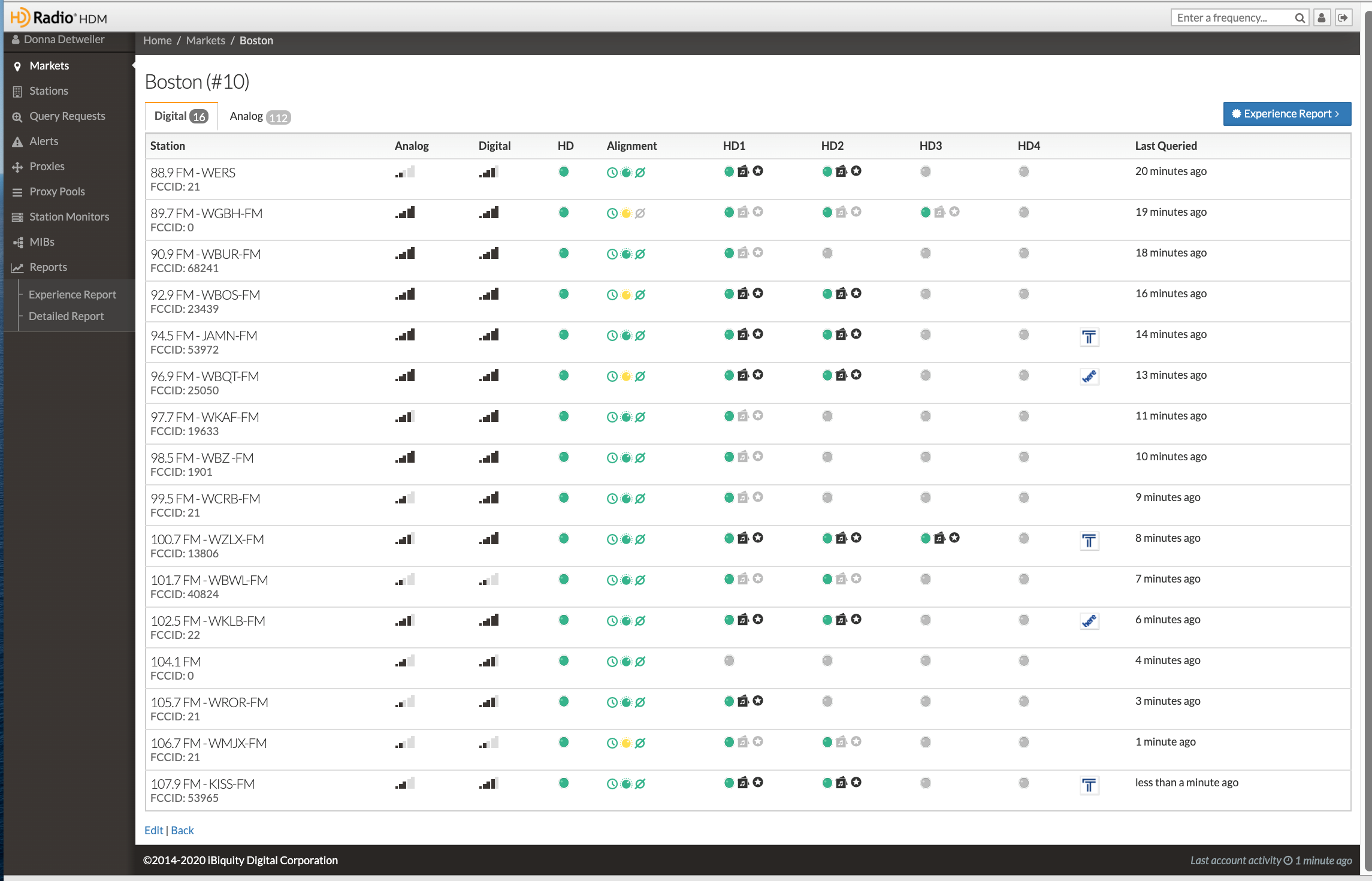The HD Radio™ Monitor Network (HDM)
Today consumers have nearly unlimited choices in multimedia entertainment. With so many options available, the user experience is key to a technology’s success. With over 70 million HD Radio™ receivers around the world, how would you ensure that the more than 4500 digital broadcast channels are performing at their best and delivering an extraordinary listener experience? To accomplish this, station engineers would want a reliable, flexible and remotely addressable system to identify station inconsistencies before they become listener concerns. The HD Radio Monitor Network provides these services. Over a decade of refinement has culminated in the industry’s most useful resource for tracking and maintaining consistent digital performance.
The HDM, as the HD Monitor Network is commonly known, is comprised of internet-connected, tunable receivers that reside in secure locations in key broadcast markets around the world. These HD Radio monitors sequentially tune to each signal in the market area, dwelling on each long enough to gather key broadcast signal metrics and program metadata to quantify the listener experience. The HDM’s backend routinely queries 48 signal parameters of the stations monitored. If a search identifies signal anomalies, it can generate an email notification to the station engineer to alert them of the condition. If a condition remains unresolved it may escalate the event as a trouble ticket for HD Radio personnel to follow-up. This notification feature is useful in identifying signal concerns before they become a listener complaint. If an issue is identified, the HDM may perform a detailed capture of over 200 signal parameters to assist with diagnostics. If a signal parameter is out of bounds, reports are created and may be shared with the station to alert them to the errant signal condition.

RF Signal recordings may also be recorded on the HDM and downloaded to reproduce the irregular signal conditions in the lab. This recorded signal information is particularly useful in determining if a “fix” has resolved the concern. Xperi Corporation’s HD Radio team has used this remote capture feature to assist radio receiver manufacturers in their quality studies and customer management programs. With this remote network solution, the HD Radio team is able to identify root cause within a 24-hour period.
The HDM also provides an editorial service validating content listing for the Interactive Station Guide at hdradio.local. The HDM validates the program information on each HD channel including the HD multicasts (HD2, HD3, HD4, etc.). This feature ensures the program guide is up to date with relevant genre and branding for listeners to find their favorite stations.
Consumers don’t buy technology; they buy what it does for them. Consistent delivery of quality content is paramount in developing the bond with the consumer. When broadcast service or system issues arise, the radio industry and manufacturing partners rely on Xperi’s HD Radio team to monitor and resolve the complaint. HD Radio technology has become a leading technology around the globe because of its service support and quality of service monitoring. One of the key resources in that service effort is the HDM.
The HDM, as the HD Monitor Network is commonly known, is comprised of internet-connected, tunable receivers that reside in secure locations in key broadcast markets around the world. These HD Radio monitors sequentially tune to each signal in the market area, dwelling on each long enough to gather key broadcast signal metrics and program metadata to quantify the listener experience. The HDM’s backend routinely queries 48 signal parameters of the stations monitored. If a search identifies signal anomalies, it can generate an email notification to the station engineer to alert them of the condition. If a condition remains unresolved it may escalate the event as a trouble ticket for HD Radio personnel to follow-up. This notification feature is useful in identifying signal concerns before they become a listener complaint. If an issue is identified, the HDM may perform a detailed capture of over 200 signal parameters to assist with diagnostics. If a signal parameter is out of bounds, reports are created and may be shared with the station to alert them to the errant signal condition.

RF Signal recordings may also be recorded on the HDM and downloaded to reproduce the irregular signal conditions in the lab. This recorded signal information is particularly useful in determining if a “fix” has resolved the concern. Xperi Corporation’s HD Radio team has used this remote capture feature to assist radio receiver manufacturers in their quality studies and customer management programs. With this remote network solution, the HD Radio team is able to identify root cause within a 24-hour period.
The HDM also provides an editorial service validating content listing for the Interactive Station Guide at hdradio.local. The HDM validates the program information on each HD channel including the HD multicasts (HD2, HD3, HD4, etc.). This feature ensures the program guide is up to date with relevant genre and branding for listeners to find their favorite stations.
Consumers don’t buy technology; they buy what it does for them. Consistent delivery of quality content is paramount in developing the bond with the consumer. When broadcast service or system issues arise, the radio industry and manufacturing partners rely on Xperi’s HD Radio team to monitor and resolve the complaint. HD Radio technology has become a leading technology around the globe because of its service support and quality of service monitoring. One of the key resources in that service effort is the HDM.

